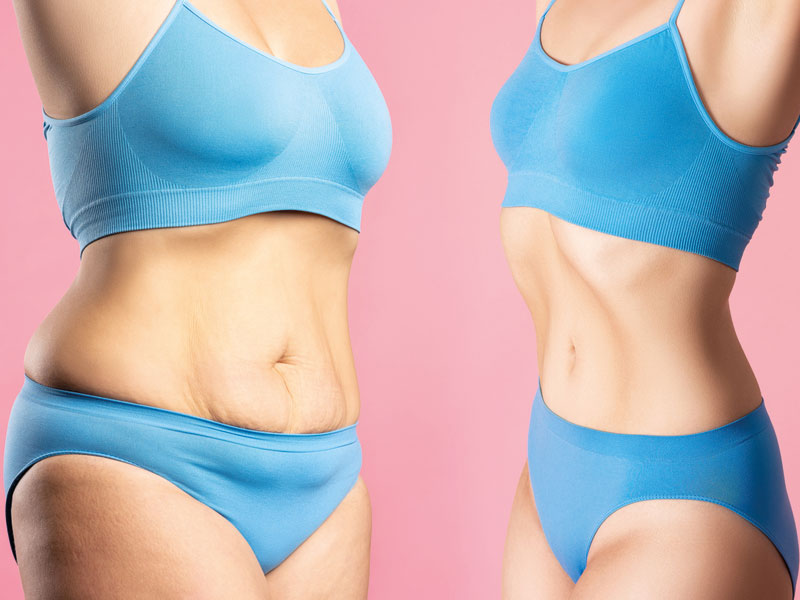
Today, obesity has become a disease that threatens public health. The incidence of obesity has increased in all age groups, especially in children, and obesity-related diseases have become more common due to this increase. Obesity is a condition that seriously threatens cardiovascular health. In order to prevent obesity-related diseases, obesity must be treated.
What is Bariatric Surgery?
Bariatric surgery is a weight loss surgery applied to people who have clinical obesity problems and are at risk for health problems related to this excess weight. Bariatric surgery, also called bariatric surgery, is applied to patients who cannot lose weight to the targeted extent with diet and exercise. With bariatric surgery, the eating capacity of the person is reduced in some methods, while the amount of food absorbed from the stomach and intestines is reduced in some methods. In some types of bariatric surgery, both procedures can be performed at the same time.
Gastric sleeve surgery
Gastric sleeve surgery is the surgical transformation of the stomach into a tube (pipe). When the digestive system is examined, it is seen that almost all the organs of this system are tubular. The esophagus, intestines, these are all organs in the form of thin long pipes. The stomach, which is an exception in this system, is in the form of a pouch, not a tubular shape, so that it can take more food and create a warehouse. Gastric sleeve surgery is the irreversible removal of a large part of the stomach by surgery, making it a system that continues with the esophagus and intestines. A tube or other foreign body is not placed in the stomach. It is called sleeve gastrectomy surgery because the shape of the stomach is similar to the shape of the tube.
Gastric Bypass
Thanks to this surgery, in the morbidly obese (Fatal Obesity) patient; In the first move, 90% of the stomach is disabled. The remaining part of the stomach is about the size of a “cup” and this part is connected 130-150.cm further than the small intestine (our small intestines are 600 cm long on average) with the second move (60-80% of sugar and fat are absorbed from this part, the aim is to disable the intestinal part where sugar and fat are absorbed the most) and the surgery is completed.
Stomach Balloon Surgeries
The simplest method to help lose weight is gastric balloon application. In this method, with the help of an endoscope, a balloon filled with liquid or air in the stomach is placed under light anesthesia. This process takes 15-20 minutes. Thus, the food intake capacity of the stomach is reduced and rapid satiety is achieved. With this method, patients can lose 7-8 kilos in a few months. However, this balloon (gastric balloon) can stay in the body for 6 months, a maximum of 1 year and is removed endoscopically within 5-6 minutes.
Liposuction
Liposuction is a surgical procedure that aims to remove excess fat tissue from the body. The procedure is usually performed under local anesthesia or sedation for the comfort of the patient and pain control. First, fluid is injected into the areas to be treated. This injection liquefies and swells the adipose tissue in a way that allows the fat cells to be easily removed. Then, using a thin cannulated device, the fat cells are suctioned. Liposuction can be used to correct body contours, reduce unwanted fat deposits, or for aesthetic purposes. The recovery process after the procedure is important and the doctor’s recommendations should be followed.
Body Sculpting
Body Sculptor is a method that reduces the subcutaneous fat in the body, as well as the intra-abdominal fat that surrounds the organs and poses a health risk, and also tightens the skin. It stimulates and activates the muscles with the biomagnetic field it creates, and provides the destruction of fat cells in a natural way.
The body sculptor is not actually a slimming tool or a regional slimming device. In this system, which reshapes the entire silhouette, the treatment is applied to the whole body in the same session. It is a comfortable and painless method. The session covers the abdomen, waist area, legs, arms and neck area, but the areas that are not needed can be removed from the session upon request. It is a suitable treatment method especially for patients with thickening in the lower legs and lipedema patients.
You can contact us now for more information on the subject and for a free consultation.